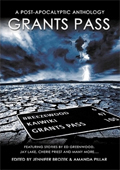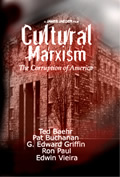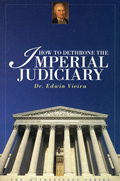TAKING
THE AGENDA 21 FIGHT TO THE MAINE STATE LEGISLATURE
PART 1 of 2
by Tom
DeWeese
May 2, 2015
NewsWithViews.com
Recently I was invited to address the state legislature of Maine to discuss Agenda 21 and its assault on private property rights. THAT HAS NEVER HAPPENED BEFORE IN MY 20+ YEARS OF FIGHTING AGENDA 21. THIS WAS AN HISTORIC OCCASION IN OUR FREEDOM MOVEMENT! Our movement is gaining strength.
I
was given unlimited time to testify and was introduced as “the expert”
on Agenda 21 and the protection of private property rights. I
was invited  because
I have been working with local property rights activists, and with Maine
State Representative Rick Long. I have been advising them that we need
more than just a one of a kind anti-Agenda 21 bill – as has been
tried in several states.
because
I have been working with local property rights activists, and with Maine
State Representative Rick Long. I have been advising them that we need
more than just a one of a kind anti-Agenda 21 bill – as has been
tried in several states.
You see, in many states, legislators have tried to create a “one-size-fits- all style of bill that calls for the banning Agenda 21. While I applaud that effort – the truth is - it doesn’t work. That’s because the pro-Agenda 21 forces LIE – and they say “their” plan is not Agenda 21 – but just a local plan. That one lie makes such Anti-Agenda 21 legislation worthless.
So I am working to teach well meaning, concerned legislators that they must, instead, create a full legislative plan with a series of bills to stop the Sustainable Development juggernaut.
We need to focus on stopping the attacks on private property rights.
We need to stop the creation of non-elected regional councils and multi-county regional governments.
And we need to stop these non-elected councils from applying and shackling our communities under federal grants that come with Agenda 21 policies requirements attached.
Representative Long listened to my advice. He is now working to create an extensive legislative plan that will include several bills to protect private property rights, stop the taking of federal grants, and limit the power of the self-proclaimed big government “Stakeholders” which are driving the Agenda 21 policies in the back rooms of local and state government.
Here is my testimony delivered to the Maine legislative committee which was considering Representative Long’s property rights legislation. (TAD)
Testimony to the Maine legislature by
Tom
DeWeese,
American Policy
Center
First, let me address the 1,000 pound Gorilla in the room – the claim that Agenda 21 is just a right wing conspiracy theory.
The Southern Poverty Law Centers says, “Agenda 21 is not a treaty. It has no force of law, no enforcement mechanisms, no penalties, and no significant funding. It is not even a top-down recommendation, seeking instead to encourage communities around the world to come up with their own solutions to overpopulation, pollution, poverty and resource depletion. It is a feel good guide that cannot force anyone, anywhere to do anything at all.”
And that is exactly what planners, non-governmental organizations and federal officials tell you and city councilmen and county commissioners every day.
The fact is, up until the mid 2000s, no one was saying Agenda 21 was a Rightwing fringe fantasy.
In 1992, over 50,000 delegates, including diplomats, business leaders, government officials, members of thousands of non-governmental organizations and 179 heads of state – all gathered in Rio de Janeiro to introduce to the world a document they called a “Comprehensive Blue Print” for reorganizing human society.
Obviously they thought it was a pretty big deal.
Then, later that same year, Nancy Pelosi introduced the idea to the US Congress through a Resolution calling for Congressional support of Agenda 21. She called it a Comprehensive Blueprint. (I‘ve got the Cspan video on my website).
The UN, in a 1993 publication described Agenda 21 like this: “Agenda 21 proposes an array of actions which are intended to be implemented by EVERY person on Earth…it calls for specific changes in the activities of ALL people… Effective execution of Agenda 21 will REQUIRE a profound reorientation of ALL humans, unlike anything the world has ever experienced.”
In 1994, the American Planning Association (one of the largest and respecting planning groups in the nation) put out a newsletter calling Agenda 21 a Comprehensive Blueprint.
In fact, one paragraph from that news letter said, “Vice President Gore’s book, Earth in the Balance addressed many of the general issues of sustainability. Within the past year, the President’s Council on Sustainable Development has been organized to develop recommendations for incorporating sustainability into the federal government. Also, various groups have been formed to implement Agenda 21, a comprehensive blueprint for sustainable development that was adopted at the recent UNCED conference in Rio de Janeiro (the “Earth Summit.”)
In that one paragraph, this document brings together the APA, Agenda 21, the UN’s Earth Summit, Al Gore, Sustainable Development, the President’s Council on Sustainable Development, NGO groups with the mission of implementing Agenda 21 and the description of Agenda 21 as a “comprehensive Blueprint” for Sustainable planning.
In 1997 the United States issued a 70 page report to the United Nations Department for Policy Coordination and Sustainable Development.
That report, entitled “Implementation of Agenda 21: Review of Progress made since the UN Conference on Environment and Development, 1992” documented the progress the US was making to implement Agenda 21.
In 1998, the Federal Register issued a report on the EPA’s Challenge Grant Program. That report says, “The EPA’s Challenge Grant Program is also implementation of Agenda 21."
In 2011, the EPA issued a revised report entitled “History of Sustainability.” It details how EPA policy on Sustainability was developed. The Fifth item on that report is Agenda 21, calling it a “comprehensive process of planning and action to attain sustainability.”
And on and on it went, about Agenda 21. The blueprint. The plan. The consensus. The direction for changing how people live. Here was the plan for the 21st Century!
And they were quite proud of it.
In fact, it wasn’t until the mid 2000s that such pride started to change to denial of any knowledge of Agenda 21 and charges of conspiracy theories.
Why? What happened?
That’s when I and others started to reveal the truth about Agenda 21 and sound the alarm bells. And a few years later, thousands of concerned Americans started to ask questions.
Suddenly, the Sustainable Development movement became hard pressed to remember anything like that. Never heard of it, went the cry.
In fact, the entire green movement, officials in government, planning groups, and NGOs went suddenly dumb.
Their most often used description of Agenda 21 is an “innocuous, 20 year old document that has no enforcement power.” Just like the SPLC said in its report against me.
Continuously we hear that local planning programs, especially from such groups like the American Planning Association (APA) have no connection to Agenda 21 or the UN. It’s all local – or as the APA says in its document, “Glossary for the Public, “There is no hidden agenda.”
So, let’s talk about why this is such a controversy and why I and thousands of others are trying to stop it.
First, It is true that it Agenda 21is not a treaty. It is true that the plan in itself has no enforcement capability. And it is true that there are no Blue helmeted troops at city hall. Agenda 21 is not a law.
So, how did Agenda 21/Sustainable policy make its way into every state, and nearly every community in the nation?
After those 50,000 world leaders, Non-governmental organizations, government bureaucrats, and 179 heads of state signed agreement to Agenda 21 at the Earth Summit in 1992, the policy then gained huge momentum when, in 1993, President Bill Clinton, issued Executive Order 12852 to create the President’s Council on Sustainable Development and made it official US policy.
Then, those same NGOs who wrote Agenda 21 at the international level, converged on our government and helped to write the federal policies.
Most importantly they helped to create grant programs. The grants, through HUD, the EPA and nearly every other agency in the Federal Government are the kool aid used to spread the policy across the nation.
They tell you the grants are voluntary, and in a sense they are. But they come with very specific strings attached that are, in fact, Agenda 21/Sustainable policy.
A few examples include restrictions on energy use, development, building codes, land use controls, and water controls.
The rules impose international guidelines for building materials, plumbing codes, electric codes; installing bike lanes; building apartment buildings with no parking lots, and establishment of public transportation, including light rail trains.
If a local government “voluntarily” takes the grant they automatically are forced to accept the restrictions. In short, they must implement the guidelines of Agenda 21.
After creating such “voluntary” programs, the same NGOs headed to the state legislatures and lobbied for legislation that forced every community to impose comprehensive development plans.
Then, as the local communities were faced with the task of writing such plans, the same NGOs appeared at the door of county commissioners and city councils – conveniently armed with plans and “grants” to help them write and pay for their development programs.
In the back rooms of city halls and the state legislatures, government officials work hand in hand to write policy with the very NGOs which created Agenda 21. These groups wield power only because elected officials give it to them.
That is the secret they are hiding under all the pretty words about livable communities and smart growth.
But, why do we consider it a threat?
To understand the true threat of Agenda 21, you must first understand that it is NOT an environmental policy or just a good idea for planning future development for communities.
Agenda 21 is a threat to our nation, to our states, and to our local communities – because it is, in their words, a comprehensive blueprint specifically designed to change our way of life and our form of government.
That’s its purpose. That’s why they call it an “agenda!”
Agenda 21 comes to us in three parts.
Economic. Equity. Environment. We call it the three Es. And they encompass every aspect of our lives.
The Economic section means Public Private Partnerships between government and selected private corporations.
Through these partnerships the government gains the ability to hide behind the independence of business. Those private corporations spend their advertising dollars to convince us to accept the policies. They become the government’s free propaganda tool.
Business gets the power of government, such as the use of Eminent Domain and special tax credits. In fact, now spreading through legislatures across the nation is a policy called Benefit Corporations.
Benefit corporations create a new class of corporations that have accepted Sustainable policy as their own. Once they take that step, these private companies essentially get to go to the head of the line for government programs, protections, and hand outs.
It’s a new business model that shifts the economic focus away from profits for shareholders in order to fulfill social and environmental missions. The business gets ahead by essentially becoming a sustainable monopoly protected by the government.
That brings us to the second E. Social Equity or Social Justice. If you fail to understand this aspect of Agenda 21, then you will have no understanding of the issue. Social Equity is simply redistribution of wealth and is at the root of literally every sustainable policy.
And the third E is Environment. It is nothing more than the excuse to get us to blindly accept sustainable policy, basically under the use of fear. Everything in human society today, we are warned, damages the environment. And so society has gone into a kind of paralysis, afraid to move forward.
So how does all of this affect Americans? How does it change our way of life? And how does it change our system of government?
There are many policies, plans and tools designed to implement Agenda 21/Sustainble Development. You hear the terms everyday as you go through your legislative duties.
Wetlands, conservation easements, water sheds, view sheds, rails - to- trails, biosphere reserves, greenways, carbon footprints, partnerships, preservation, stakeholders, land use, environmental protection, development, diversity, visioning, open space, heritage areas, Smart Growth, and comprehensive planning are all part of the new language of government.
|
|
Each one of these items, and many more, lead to controls, outright banning, shortages, higher costs, bigger government, and sacrifice of the American people.
Let me take just one of these as an example to illustrate how it works. Perhaps the largest and farthest reaching plan is – Smart Growth. We’re told Smart Growth policy is necessary to create the community of the future to guarantee effective planning to protect the environment by reducing our carbon foot print for global warming.
In fact, almost every state, and every region of each state has a similar plan in process, usually ending with numbers like 20/50. For part two click below.
Click here for part -----> 1, 2,
� 2015 Tom DeWeese - All Rights Reserved
Tom DeWeese is one of the nation’s leading advocates of individual liberty, free enterprise, private property rights, personal privacy, back-to-basics education and American sovereignty and independence.
A native of Ohio, he’s been a candidate for the Ohio Legislature, served as editor of two newspapers, and has owned several businesses since the age of 23. In 1989 Tom led the only privately-funded election-observation team to the Panamanian elections. In 2006 Tom was invited to Cambridge University to debate the issue of the United Nations before the Cambridge Union, a 200 year old debating society. Today he serves as Founder and President of the American Policy Center and editor of The DeWeese Report
For 40 years Tom DeWeese has been a businessman, grassroots activist, writer and publisher. As such, he has always advocated a firm belief in man’s need to keep moving forward while protecting our Constitutionally-guaranteed rights.
The DeWeese Report , 70 Main Street, Suite 23, Warrenton Virginia. (540) 341-8911
E-Mail: admin@americanpolicy.org
E-Mail: ampolicycenter@hotmail.com
Website: www.americanpolicy.org














 Share
This Article
Share
This Article





